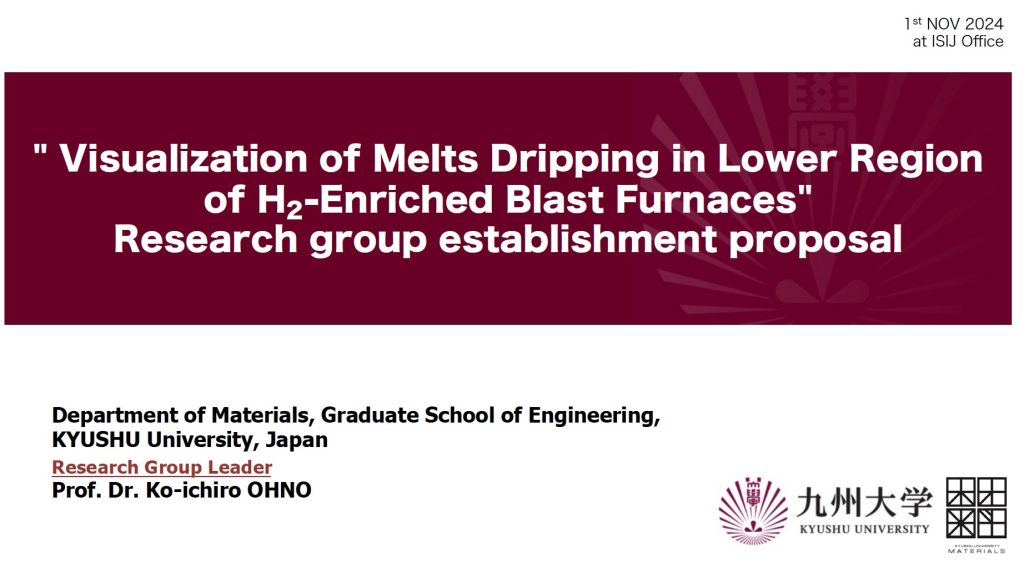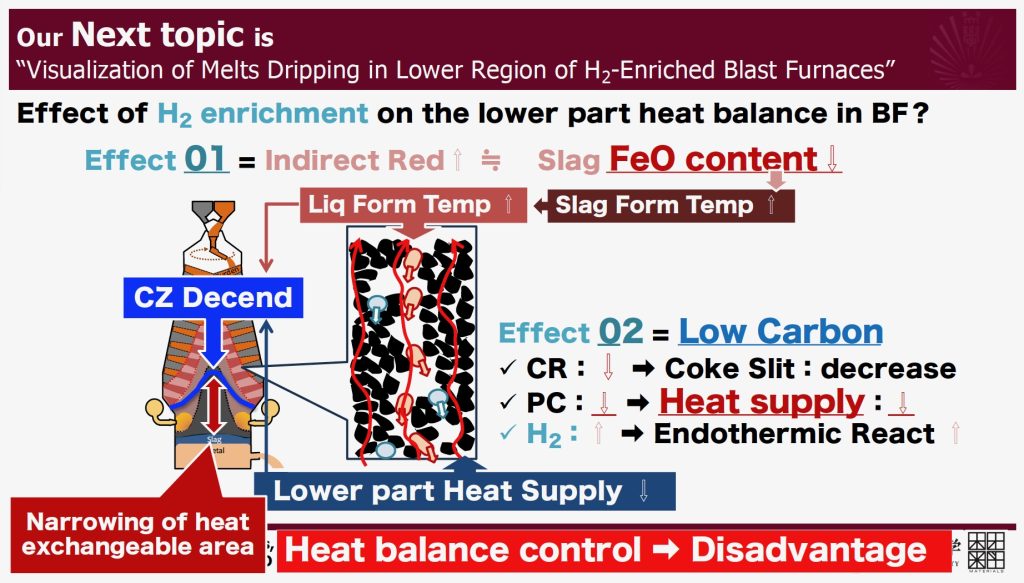日本鉄鋼協会で提案した新研究プロジェクトが11月28日付けで採択されました!
日本鉄鋼協会には鉄鋼研究分野における学術的・技術的に重要な課題を取り上げ、産官学連携で研究活動を推進し、大学等の研究機関における鉄鋼研究の活性化を目指す研究会制度があります。
研究期間は3年以内で、研究費は3年間で最大1500万円、大学や公的研究機関の研究者には研究費が支給されます。
昨年までは、水素富化高炉の塊状帯を適切に制御することを目的とした研究グループを主催していましたが、この度、日本鉄鋼協会の新しいコンペティションに参加し、来春からの新しい研究グループに無事に採択されました。
次の研究グループでは、水素富化高炉における滴下帯の可視化に取り組みます。
よく知られているように、高炉内部の可視化は難しい領域であり、水素富化は融着帯近傍の残留未還元酸化鉄のバランスを劇的に変化させ、銑鉄やスラグの形成挙動や滴下運動に大きな変化をもたらします。
本研究会では、2026年からの3年間で、8つのアカデミアと5つの鉄鋼業界エンジニアが課題解決に取り組みます。

Screenshot

Screenshot
A new research project proposed by the Iron and Steel Institute of Japan has been adopted!
The Iron and Steel Institute of Japan has a research group system that takes up important academic and technical issues in the field of steel research, promotes research activities through industry-government-academia collaboration, and aims to revitalize steel research at universities and other research institutes.
The research period is within three years, and the research budget is up to 15 million yen over the three years, and researchers at universities and public research institutes are provided with research funds.
Until last year, we hosted a research group aimed at properly controlling the lumpy zone in a hydrogen-enriched blast furnace, but this time we participated in a new competition held by the Iron and Steel Institute of Japan and were successfully selected as a new research group starting next spring.
In the next research group, we will work on visualizing the drip zone in a hydrogen-enriched blast furnace.
As is well known, visualization inside a blast furnace is a difficult area, and hydrogen enrichment dramatically changes the balance of residual unreduced iron oxide near the cohesive zone, causing significant changes in the formation behavior and dripping motion of pig iron and slag.
In this study group, eight academics and five steel industry engineers will work on solving problems over a three-year period starting in 2026.
#researchproject #blastfurnace #H2BF #drippingzone
![反応制御学研究室[大野研究室 / Ohno LAB.]](https://www.ironmaking.kyushu-u.ac.jp/wp/wp-content/uploads/2025/04/スクリーンショット-2025-04-07-16.54.15.png)
